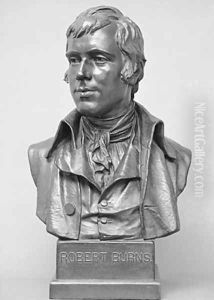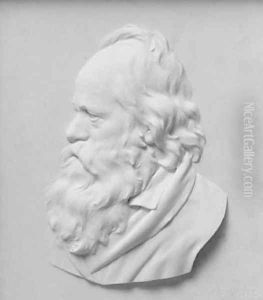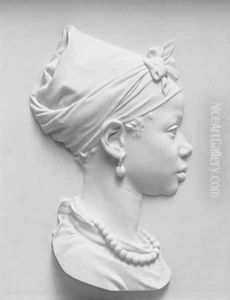Charles Calverley Paintings
Charles Calverley was an American sculptor born on August 16, 1833, in Albany, New York. He showed an early aptitude for art and began his formal education at The Albany Academy. His initial artistic training began under sculptor Erastus Dow Palmer, who was a prominent figure in American art during the 19th century. Under Palmer's mentorship, Calverley developed his skills in the neoclassical style, which was prevalent at the time.
Calverley moved to New York City in the 1850s to further his career. He later traveled to Rome, which was a common destination for artists seeking to refine their craft and draw inspiration from classical art and Renaissance masters. In Italy, Calverley was deeply influenced by the abundant historical art and sculpture, which is reflected in the classical style and themes of his work.
Throughout his career, Calverley was known for his portrait busts, ideal figures, and funerary monuments. He worked primarily in marble, a medium favored for its nobility and permanence, and his works were characterized by their refined elegance and precise craftsmanship. Calverley's sculptures were exhibited at prestigious venues such as the National Academy of Design and the American Art-Union, and he received commissions from a variety of patrons, including prominent figures of his time.
Calverley's contributions to American sculpture were part of a broader movement that sought to establish a national artistic identity. His works were well-received, and he was respected by his contemporaries for his dedication to the neoclassical tradition and his skill as a sculptor. Charles Calverley passed away on May 24, 1914, in Newark, New Jersey, leaving behind a legacy of work that continues to be appreciated for its classical beauty and technical mastery.


